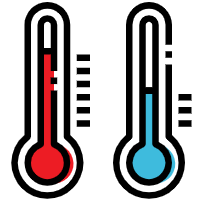TPE Products
Since 2007, Sutper TPE has been dedicated to the development, production, and sale of high-quality thermoplastic elastomers (TPE). Our extensive product range includes TPV, SEBS, and SBS series, positioning us as a key player across diverse industries.
Particularly in the footwear sector, our TPE raw materials stand out with a distinct competitive advantage, offering superior performance and versatility. Discover how Sutper TPE can elevate your products and drive innovation in your industry.
Thermoplastic Elastomers (TPE)
According to the ASTM D1566 standard, thermoplastic elastomers (TPEs) are a group of rubber-like materials that can be processed and recycled like traditional thermoplastics, unlike conventional vulcanized rubber. One of the key advantages of TPEs is that they do not require curing or vulcanization during processing.
This allows TPEs to be manufactured using standard thermoplastic techniques such as injection molding, extrusion, and blow molding. Their versatility and ease of processing make thermoplastic elastomers an excellent choice for a wide range of applications. Explore the benefits of TPEs and how they can enhance your product development process.
Sutper V (Thermoplastic Vulcanizates)
Thermoplastic vulcanizates (TPVs) are advanced materials created through the dynamic vulcanization process, which involves the homogeneous dispersion of small crosslinked rubber particles within a thermoplastic matrix. TPVs typically consist of a blend of ethylene propylene diene monomer (EPDM) and polypropylene (PP).
The inclusion of polypropylene is essential due to its high melting point and crystallinity, contributing to TPVs that maintain excellent properties even at elevated temperatures. In contrast, EPDM is chosen for its exceptional stability against heat, oxygen, and ozone, allowing TPVs to exhibit outstanding heat oxidation and ozone resistance.
Additionally, TPVs are renowned for their chemical resistance to aqueous solutions and their low compression set, making them ideal for various applications where durability and performance are critical. Discover how TPVs can enhance your products with their superior mechanical properties and resilience.
Sutper E (SEBS based TPE)
SEBS-based thermoplastic elastomer (TPE) compounds feature a soft phase composed of ethylene and butylene, created through the hydrogenation of styrene-butadiene-styrene (SBS). These advanced materials offer exceptional heat, UV, oil, and chemical resistance, primarily due to the absence of double bonds in their molecular structure.
As the most widely used styrenic block copolymer, SEBS is favored for its superior performance characteristics, making it ideal for various applications that require durability and resilience. Learn more about how SEBS-based TPE compounds can enhance your products with their outstanding properties.
Sutper R (SBS based TPE)
SBS-based thermoplastic elastomer (TPE) compounds utilize butadiene as their soft phase. While these compounds are versatile, they do not offer the same level of resistance to external conditions as SEBS-based TPE compounds, primarily due to the presence of double bonds in their molecular structure.
As a result, SBS-based TPE compounds are predominantly used for indoor applications, where environmental exposure is limited. Discover how these compounds can meet specific needs in controlled environments while providing flexibility and performance.
| Sutper V | Sutper E | Sutper R | |
| Hardness (Shore A/D) | 30A - 65D | 0A - 65D | 20A - 65D |
| Density (g/cm³) | Min. 0.89 | Min. 0.88 | Min. 0.89 |
| Compression set | Very Good | Good | Medium |
| Elasticity | Very High | High | Medium |
| Service Temperature | -40°C to 130°C | -40°C to 90°C | -40°C to 70°C |
| Organic Solvent Resistance | Variable | Variable | Poor |
| Adhesion (Standard grades) | PP PE EVA | PP PE EVA | PP PE EVA |
| Adhesion (Bondable grades) | EPDM | ABS, PC, PC/ABS, PBT, PETG,ASA, SAN, PMMA, PET, PA6/66,PS, HIPS, EPDM | PS |




